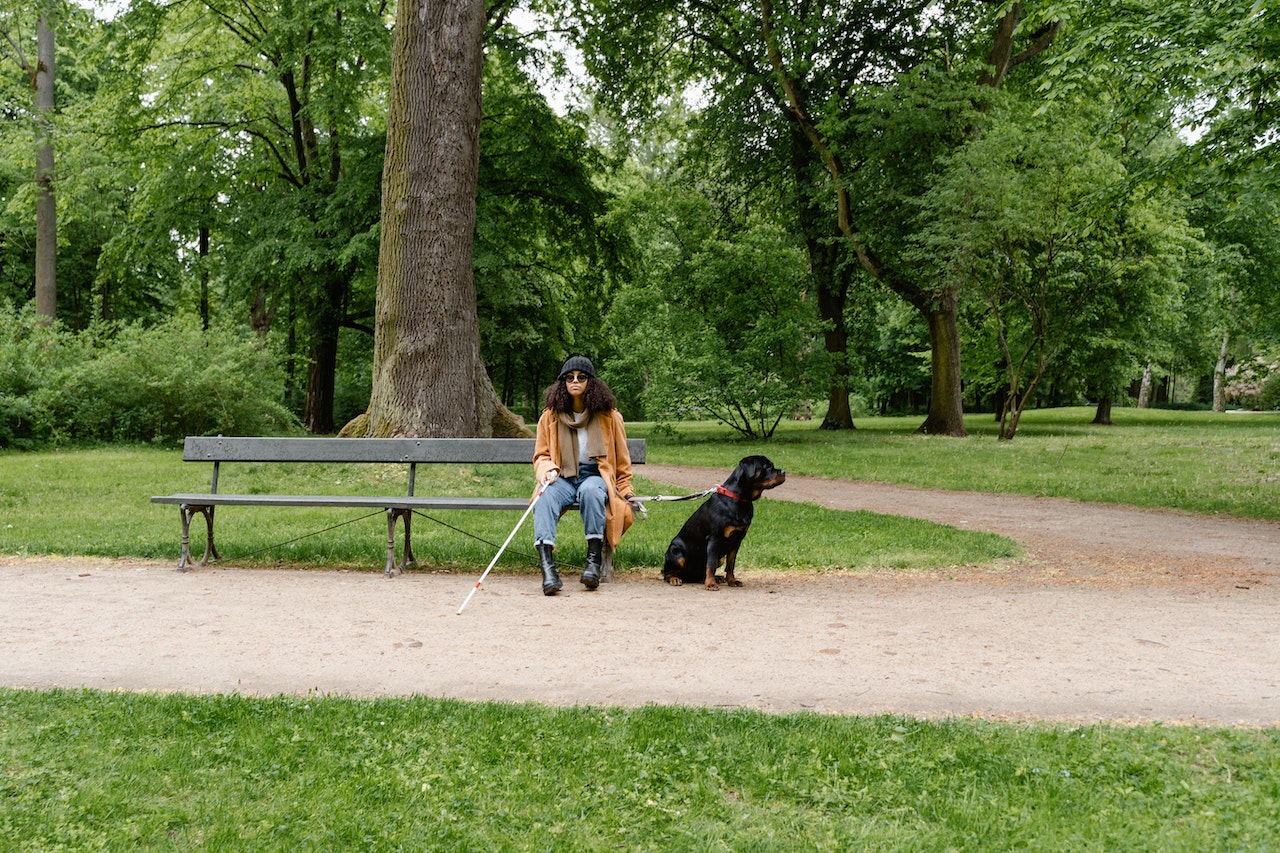How Dogs Are Trained To Guide The Blind?
Many people lose their vision as they get older, making it difficult to see clearly and identify with someone using a cane or a white-canvas bag to cover up what colors of clothes they like. Some people are totally blind, having no perception of light at all.
For these individuals, dog guides come in very handy. They teach your dog to lead you where you need to go by giving frequent rewards such as food for walking you down the hallway or taking out the trash. Once your pup gets the hang of it, he is rewarded with extra treats every time he takes you somewhere. This way, he learns that going outside means getting snacks!
Some dogs naturally learn how to guide the visually impaired, but most require some training. Fortunately, there are many ways to train your dog to be a sighted companion for the visually impaired.
Dog breeds that are commonly used as guide dogs

Many people with vision problems cannot function without their sight. Because of this, there are many different ways to aid those who are blind or low-vision. One such way is through the use of guide dogs.
Guide dogs help individuals recognize familiar locations and lead them around in order to find things. Some of these animals have been trained to take specific routes for you so that they can get you where you need to go!
These dogs are very loyal beings and will do anything for their owners. People often reward these pooches by giving them food and spending time with them when they’re not working.
There are several dog breeds that are specifically trained to be guides for the visually impaired. Two common ones are the Labrador Retriever and the Golden Retriever.
Other less well known but just as effective types of guide dogs include Chihuahuas, Greyhounds, and even cats! All of these unique pets have something special about them that makes them perfect candidates to become a service animal for the visually impaired.
The training process for guide dogs

For most people, having a service dog is not only meaningful, but also very rewarding. Having a canine assistant comes with many perks, such as reduced stress levels and overall improved quality of life.
For individuals who are blind or low vision, canines are even more effective than a white cane in offering assistance. Because these dogs have been trained to lead a visually impaired person anywhere they want to go, it is possible to take them out for some fun!
Many universities offer scholarships and financial aid for students pursuing education that involve teaching service dogs. This is an excellent way to gain professional experience while educating yourself about how to better help those in need of guidance.
Guide dogs have earned their place among our favorite pooches due to their unparalleled devotion towards helping others.
The relationship between the dog and the blind person
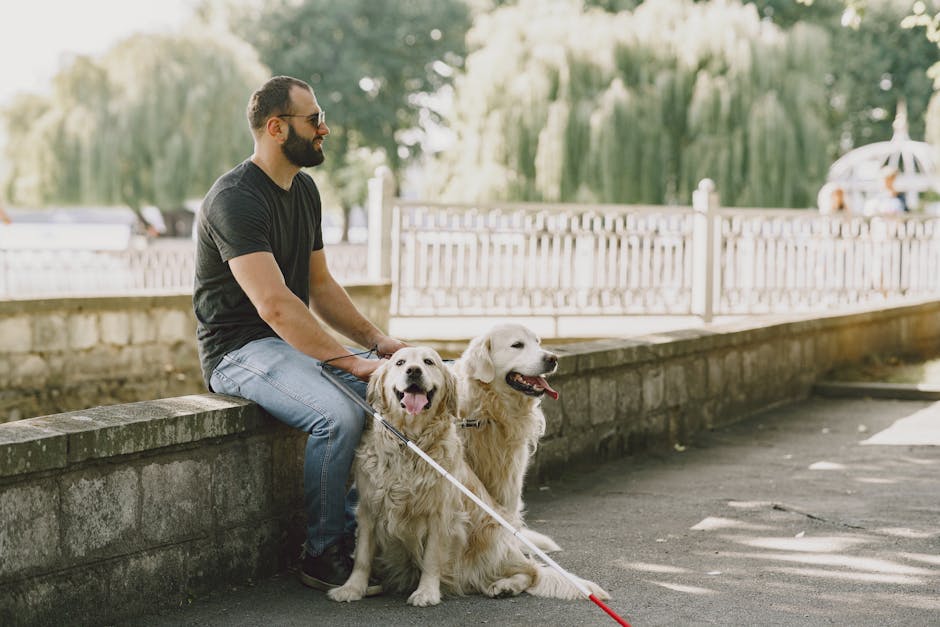
There are two main reasons why people train their dogs as service animals for the visually impaired. One is because they want a companion that will help them focus on socializing, interacting with and forming relationships with other people, or what some call being “social”.
The second reason is due to empathy. People who are trained as service dogs learn how to connect and understand emotions in others. They may be able to detect when someone is feeling down or depressed and try to make them feel better by playing games, taking walks or doing whatever activity the person was before learning how to identify visual impairments and having the right gear to manage it.
Both of these qualities can play an important part in helping the individual deal with his or her disability and improving his or her quality of life. Not only does this benefit him or her directly, but also indirectly through improved mental health and self-confidence.
Different training methods

For many people, having a service dog is their dream. A service dog is a dog that is trained to assist a disabled person in performing everyday tasks, such as getting out of bed or taking a walk.
Service dogs are not only helpful for individuals with disabilities, but they also give much needed motivation to those who need an extra boost to start doing things again.
For example, if you have a lot of friends after school, then your dog can help you by walking them outside so that you can go meet them later. If you just stepped away for a minute, your dog could get someone home for you!
There are several different types of service dogs available, from hearing dogs to guide dogs. All of these different breeds have various levels of training depending on what specific task the dog will be working towards.
Guide dogs are one of the most well known type of service animal and there are several ways that they are trained. This article will discuss some of the different training techniques used to teach your puppy how to work as a guided dog.
Cons and pros of guide dogs
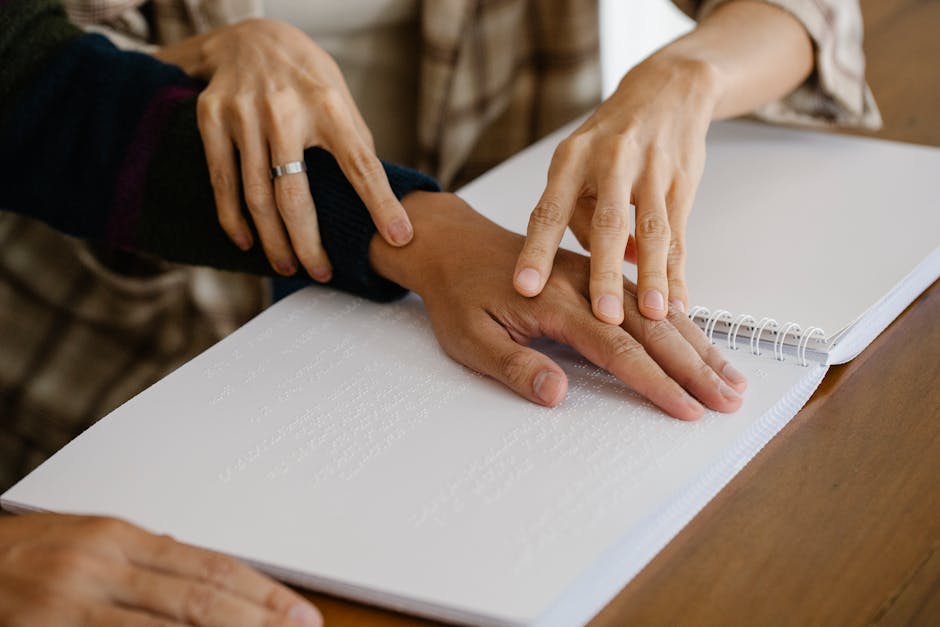
Many people have benefitted from having a service dog, most notably those with vision disabilities. While some feel that these animals take away needed focus and attention for the owner, many individuals find them rewarding and helpful in their daily lives.
Service dogs are not only beautiful companions, but they also provide important help to others. Over 670 different breeds can be trained as a service animal, including both working breeds like Labradors and Golden Retrievers, and non-workings such as Labrador mixes or black lab puppies!
Guide dogs are one of the more popular types of service dogs. These specially trained animals work with their owners to lead a normal life by helping them navigate through unfamiliar environments.
Certain breeds are better suited than others to become a guided dog. The first thing you will want to do is determine if this is the right fit for you and your family. Here are some things to consider.
Direct Teaching
There are two main types of training for dogs that work as service animals- direct teaching and indirect teaching. Direct teaching uses specific commands to teach the student, whereas indirect teaching is using behaviors to convey messages.
For example, if you want your dog to walk with an umbrella, you could directly say “walk with an umbrella” or you could show him how to walk with an umbrella by having him meet several other dogs who will have umbrellas. The way we train guide dogs is mostly of the second type – defining good behavior patterns to help people communicate when they need it.
We begin working with a young puppy around six months old, and then slowly increase the tasks until the dog is able to do them independently. This takes about a year per dog depending on their individual learning styles!
Some things that can be difficult to deal with in a guide dog include loud noises such as cars backfiring, fireworks, and heavy traffic. These are some of the most common distractions faced while walking, so being aware of these situations is very important. If a dog becomes uncomfortable or nervous due to one of these, he may decide it’s not a good day to work, which would be disastrous since he would probably be paid money to do so!
There is no formal college education program for canine professionals. What companies look for in potential candidates varies from organization to organization.
Assistance Dog
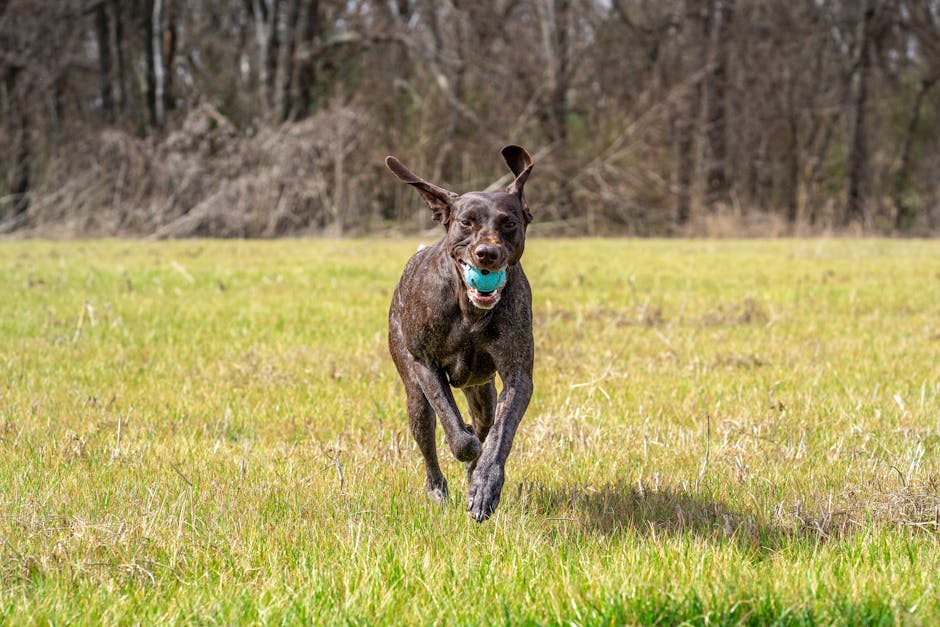
There are two main types of dogs that can be trained as guides for the blind. The first is what we refer to as an assistance dog. These dogs work with their trainer to perform specific tasks, such as getting you ready for bed or taking you out for lunch.
The second type is what we call a service dog. A service dog does not have a job until after training has been completed. This could be anything from assisting you in moving furniture to being your constant companion.
Not only do these special dogs help their owners physically, but they also give them a sense of empowerment and confidence. Not every person is able to enjoy services like this due to budget constraints or lack of availability of the service, so it is important to look into whether or not your dog would be the perfect fit before investing in certification.
Dog breeds ıf any of the following apply to your pooch then she might be the one! Don’t risk money on training unless you are sure your dog will accept the lessons and reward systems well!
Caucasian dogs, German Shepard dogs, Labrador Retrievers, Golden retrievers, Chihuahuas, and many other small breed dogs are some of the most popular choice when looking to train a guide dog. All of these breeds need consistent exercise and interaction with people to learn how to obey commands.
Here are some tips to know if your dog seems interested in becoming a guide dog.
Guide Dog
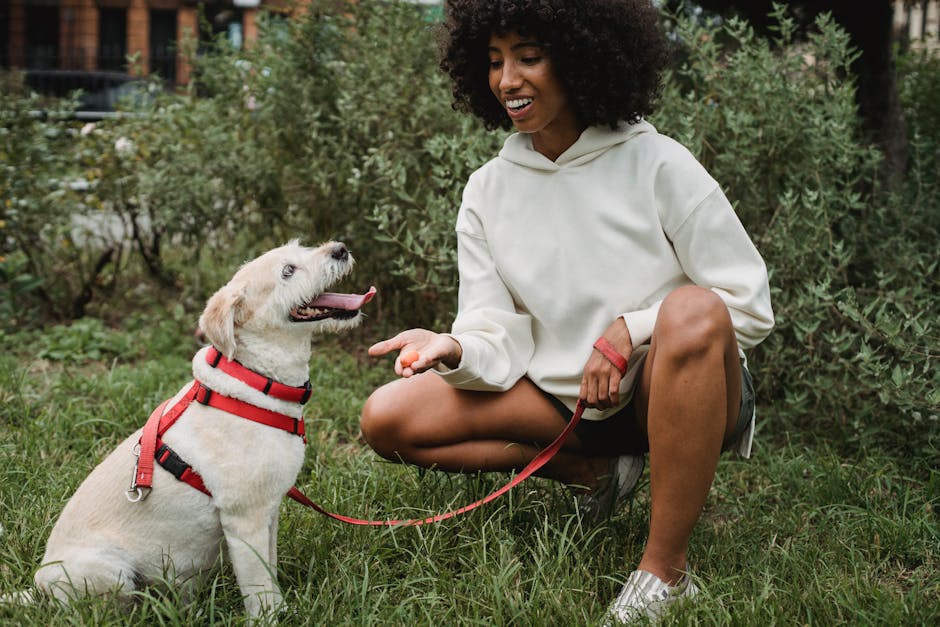
Recent developments in dog training have allowed professionals to teach your dog to guide the blind. This is very helpful for individuals who are living with vision loss or someone who just loves dogs!
The term “guide dog” comes from ancient times when only one person was able to see, so their friends would help them out by walking next to them or leading the way. As people became more advanced in reading and technology, this practice made sense to create a social barrier between individuals that could be removed as they learned how to read and use visual aids.
In fact, there are several organizations that offer trained canines to assist those individuals who cannot physically walk anywhere alone. These dogs learn specific behaviors like waiting at doors and stores for their owner to get out, taking care of their personal needs (like food and water), and guiding them through busy streets or other situations where many distractions exist.
These types of dogs are not only beautiful companions for humans, but they also enrich the quality of life for these individual owners. Not every city allows for canine service animals, which may limit the availability of this skill for some.

